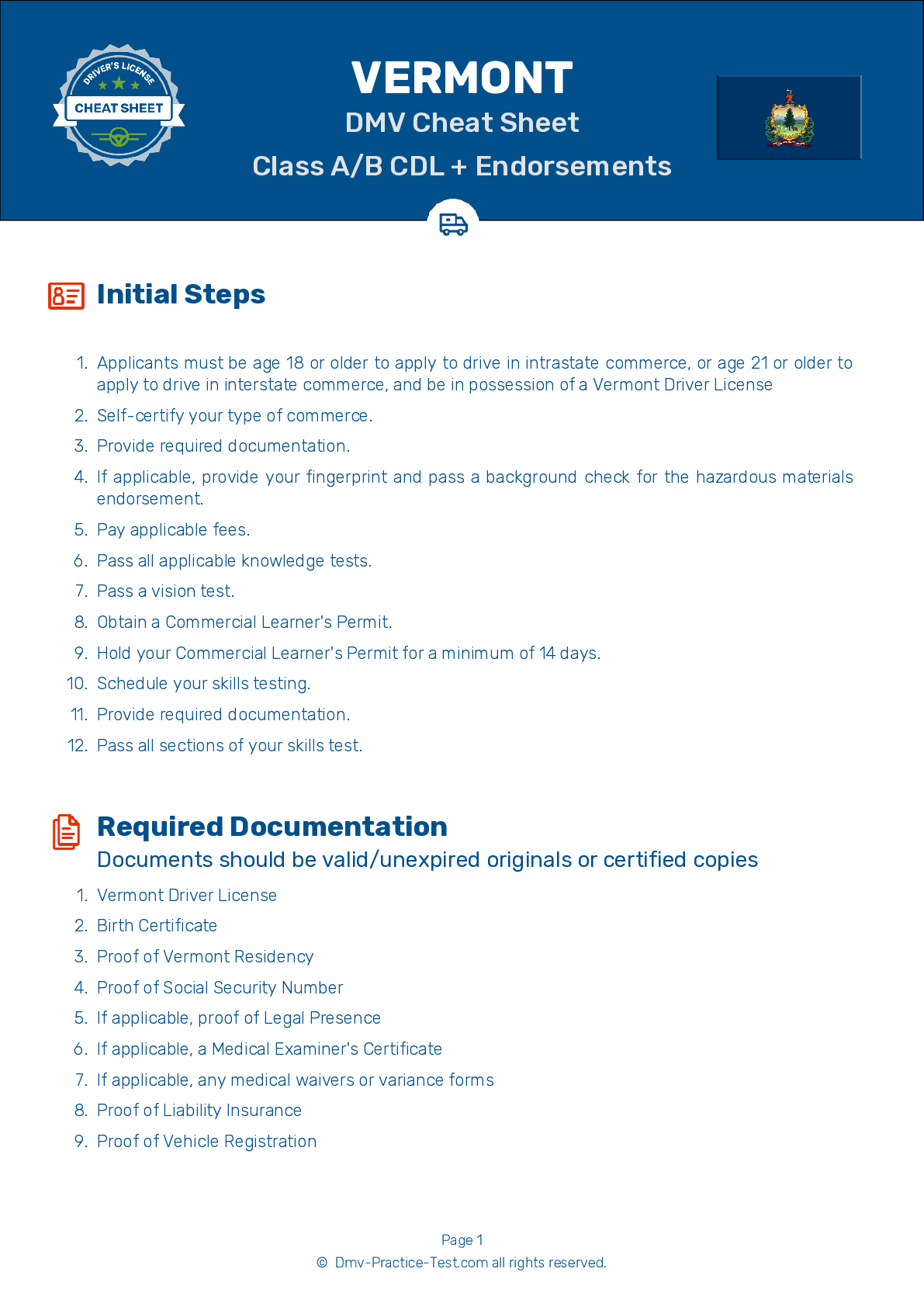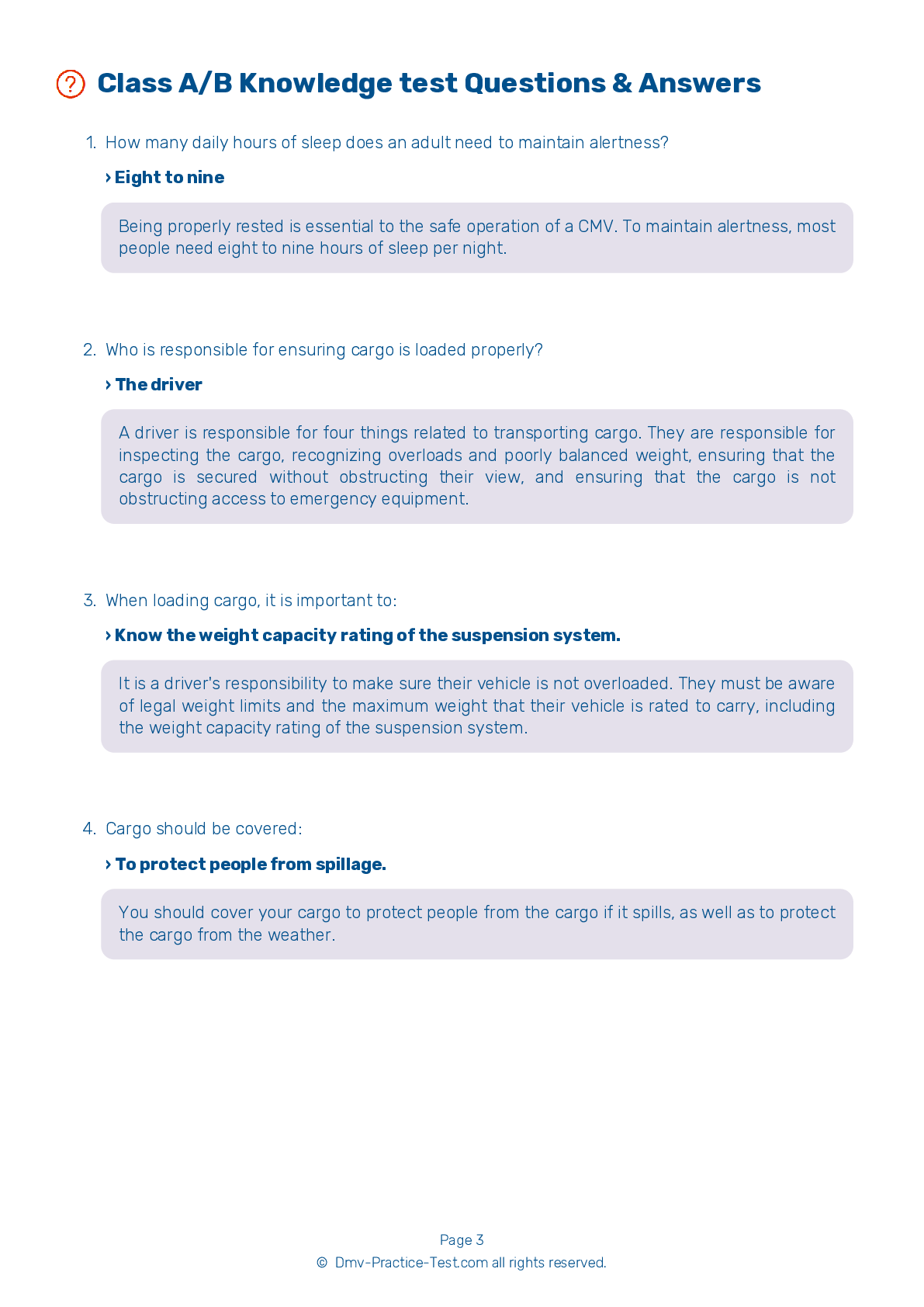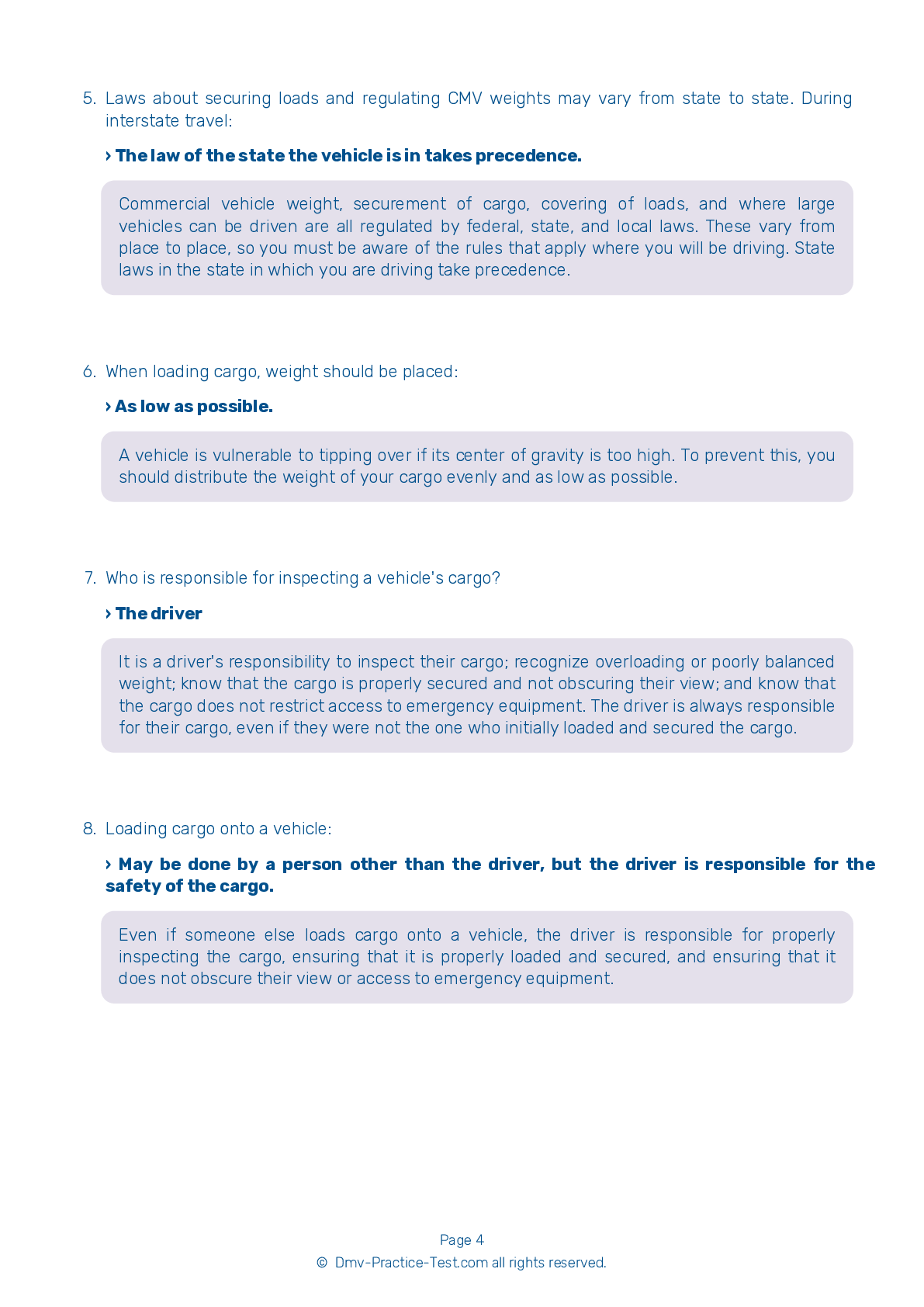Passenger #2
Passenger Endorsement | Vermont 2025 #2 Page 3 of 3
Train for FREE with our Vermont CDL passenger endorsement practice test online. The official exam test consists of several obligatory parts, with all of them checking your knowledge of different blocks of road rules. If you need to obtain a VT DMV passenger endorsement in 2025, practice as much as possible. Free sample tests published on our website will help you check and improve your knowledge and boost your grades. Please bear in mind that DMV requirements for issuing a CDL permit with passenger endorsement may vary from state to state.
20
16
20
15 . If you see taillights ahead while you are driving in fog:
When driving under foggy conditions, lights cannot be taken as a reliable indication of where the road is. The lights may be coming from a vehicle that has pulled off the road.
16 . Which of the following is not an indicator of when to change gears?
There are two indicators that determine when you need to shift into a higher gear. One indicator is the engine speed (rpm). You should read your vehicle's manual to learn its rpm range and shift up when you reach the top of that range. The other indicator is road speed (mph). You should learn which speeds each gear can accommodate, then keep an eye on the speedometer and shift up as needed.
17 . Texting while driving is especially dangerous because:
Texting while driving is particularly dangerous because it is both a mental and physical distraction to the driver. In addition to diverting a driver's mental attention away from the road, texting requires a person to remove at least one hand from the vehicle's controls.
18 . As part of a pre-trip inspection, you should look for all of the following, except:
When inspecting your tires, verify that there is tread depth of at least 4/32 of an inch in every major groove on the front tires and tread depth of at least 2/32 of an inch in grooves on the other tires. Be sure that your tires are not too worn, are not cracked, have proper air pressure, and are all equally sized.
19 . When a vehicle is started, the coolant temperature should:
After an engine is started, the coolant temperature should rise gradually to a normal operating range.
20 . Which of the following is acceptable if found during a pre-trip inspection?
When checking the tires as part of a pre-trip inspection, make sure the tires have sufficient tread. There should be at least 4/32 of an inch of tread in every major groove of the front tires, and at least 2/32 of an inch of tread depth on the other tires. Tire sizes should not be mismatched.
2025 Vermont | Frequently Asked Questions
A CDL Class B license in Vermont is for operating single vehicles with a gross vehicle weight rating (GVWR) of 26,001 lbs or more, or towing a vehicle not exceeding 10,000 lbs GVWR. This includes buses, dump trucks, tow trucks, delivery trucks, and straight trucks. It also requires passing general knowledge and air brakes tests, plus any tests for endorsements.
A Class B CDL license in Vermont allows the holder to operate single vehicles with a gross vehicle weight rating (GVWR) of 26,001 lbs or more, or a vehicle of this size towing another not exceeding 10,000 lbs GVWR. Vehicles that can be operated include buses, dump trucks, straight trucks, delivery trucks, and tow trucks.
To acquire a Class B CDL license in Vermont, you must be at least 18 years old (21 for interstate driving), have a valid driver's license, pass a vision test, and obtain a commercial learner's permit (CLP). You must also pass a general knowledge test, an air brakes test if applicable, and a skills test in the vehicle type that your CDL will cover.
In Vermont, you must be at least 18 years old to qualify for a Class B CDL license for intrastate driving (within Vermont only). However, to drive commercial vehicles across state lines (interstate driving), federal regulations require drivers to be at least 21 years old.
Endorsements for a Class B CDL license in Vermont are not necessary but they can expand your driving opportunities. They certify you to drive certain types of vehicles or transport certain goods. Examples include a passenger (P) endorsement for buses, a tank vehicle (N) endorsement, or a hazardous materials (H) endorsement. Each requires additional testing.
The Class B CDL skills assessment in Vermont includes three parts: pre-trip vehicle inspection, basic vehicle control, and on-road driving. You'll need to demonstrate knowledge of your vehicle's components, show you can control your vehicle in a variety of situations, and prove you can safely drive in traffic, following all Vermont motor vehicle laws.
Class B CDL license holders in Vermont are limited to operating single vehicles with a gross vehicle weight rating of 26,001 lbs or more, or towing a vehicle not exceeding 10,000 lbs. They can't drive a tractor-trailer combination (Class A) or motorcycles unless they have the appropriate endorsements or additional licenses.
In Vermont, the written Class B Commercial Driver's License (CDL) test is primarily administered in English. However, some locations may provide tests in Spanish. It's recommended to contact your local DMV office ahead of time to inquire about language options. Please note, federal regulations require all CDL holders to read and speak English adequately to converse with the general public and understand highway traffic signs and signals.
Yes, you can request accommodations for the Class B CDL written exam in Vermont if you have a disability. Contact the Vermont Department of Motor Vehicles (DMV) in advance to discuss your needs. Accommodations may include extra time, a separate testing room, or use of assistive technology, depending on your specific needs and the DMV's policies.
Yes, if you don't pass the Class B CDL written test in Vermont, you can retake it. However, you must wait at least one day before retaking the test. If you fail three times, you must wait 30 days before your next attempt. There may also be additional fees for each retest. Always check with the Vermont DMV for the most accurate information.



